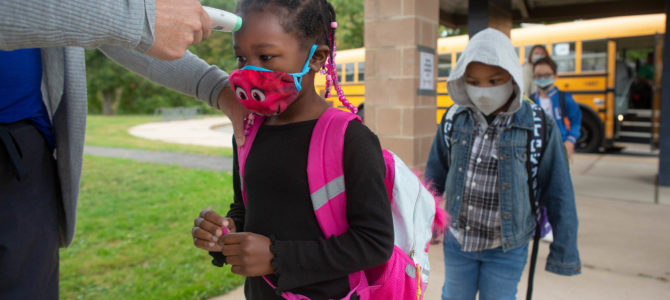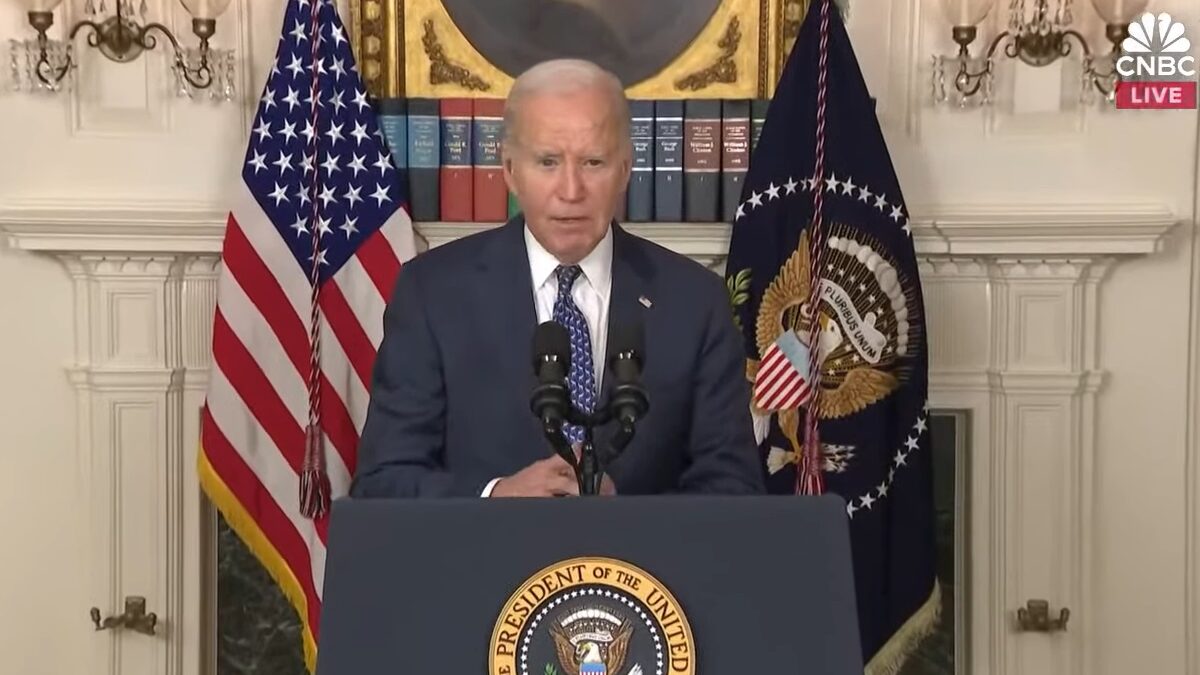
Thanks to emails published last week, we know the Centers for Disease Control and Prevention (CDC) caved to pressure from the National Educational Association to reverse a recommendation on school masking. On May 14, a day before the CDC recommended continued masking at schools, the NEA threatened to publish a letter complaining that not mandating masks in schools makes “it hard for school boards and leaders of institutions of higher education to do the right thing by maintaining mitigation measures.”
This brings up a few questions. Why did the NEA go against scientific authorities to push for more masking? Are they really scared that teachers and students are at greater risk of infection? Do they simply want to use the inconvenience of masking to motivate more people to take a vaccine? Or do they want people to mask up because they like what masking does to the school environment?
Having worked as a teacher through the dumpster fire that was the 2020-2021 school year, I strongly suspect that the NEA wants the masks because of the atmosphere it creates. While there’s little hard evidence that masks do much to stop or slow the spread of the virus, there’s strong evidence they are an effective symbol. Joy Pullmann elaborates on this idea, writing that universal masking “communicates that the entire world should look like a hospital, a fearful and sad place where people are desperately sick, even if they don’t know it.”
COVID Hysteria Dissipates Normal Responsibilities
Such an atmosphere has important benefits and drawbacks for educators. On one hand, it brings the downsides of muffled voices, stifled breathing, and limited connection between people. On the other hand, it has the upside of eliminating any real accountability.
One must remember that last school year brought many new concerns for teachers and administrators: spacing out desks, keeping class sizes tiny, cleaning desks between each class period, coordinating periods and lunches, overhauling instructional material to be compatible with remote learning, contact-tracing infected students, trying to take attendance while excusing two-week quarantine absences, and of course, telling students to keep their masks on throughout an eight-hour school day.
Implementing these measures replaced the usual concerns educators have, like testing, grades, and attendance. Many campuses, even ones with more resources, were in survival mode. Discussions at faculty and team meetings centered on simply keeping the school going and maintaining composure during a stressful time. By contrast, conversations on instructional materials, preparing students for their tests, and following the curriculum were often put on the back burner and deprioritized into oblivion.
For teachers like me, this brought about some measure of existential dread. All of a sudden, our only goal was for students to stay physically healthy and work on something that merely resembled normal school. We had to be careful not to overwhelm students with too much work or too many expectations. We were mainly there to keep the peace and offer assistance, not to move forward and guide. Our role became passive and we had much more time on our hands.
No Accountability for Teachers, No Learning for Students
That’s why other teachers found last year liberating. They no longer had to worry about a standardized test, students passing their class, or even classroom management (classes were either virtual or extremely small, masked up, and spaced out). The most administrators wanted from them was to take care of themselves, keep up the district’s regulations for COVID-19, and do what they could for attendance and grades.
Moreover, the climate of fear made doing this bare minimum somehow heroic. Teachers could go on TikTok, Reddit, and other platforms and lament that each day could be their last. None of this seemed out of place because so many experts, politicians, and media outlets did their utmost to keep up this fear.
Unfortunately, while many teachers relished these opportunities to coast at work and virtue signal at home, too many of their students had to cope with an oppressive environment and stare at screens all day, doing busywork that was basically given to check if they still had a pulse. So much of it seemed unreal because it was unreal. The goal of last year was surviving, not thriving.
All things considered, some people may come away from this story thinking teachers and teachers unions like the NEA are lazy, selfish, and hate children. Although some of these types exist, it must be understood that the real problem here is the distorted incentives of a teachers union.
Teachers Unions’ Distorted Incentives
Like any other union, teachers unions like the NEA are charged with protecting teachers from exploitation and mistreatment. As they gain more leverage in negotiations, they naturally take this idea of protection to its extreme conclusion — protection from all expectations or obligations. This means not only pushing for higher salaries and easier work, but also eliminating tests and other metrics that assess teacher effectiveness.
To some degree, playing up the threat of the virus is what most people have done, using it as an excuse to lift all possible professional and personal burdens that come with being a human being living in the 21st century. From this perspective, the threat of the virus relieves people of having to make friends, go to work, or even leave the house. It may be a pointless life, but it’s an easy one.
Nevertheless, like any illusion, it will dissolve at some point. For the CDC to perpetuate this false reality only destroys its credibility. Like the boy who cried wolf, people will start tuning them out, even when the threat is actually grave.
As it stands, the institutions and individuals that have come to grips with reality are now returning to normal, and this has been a wonderful thing. Those who haven’t are only prolonging a ridiculous situation, making everyone miserable in the process.
Those living in the real world must continue rebutting the claims of comprised institutions and continue bringing those resisting reality out of their funk. Only then will the COVID-19 nightmare finally end.









